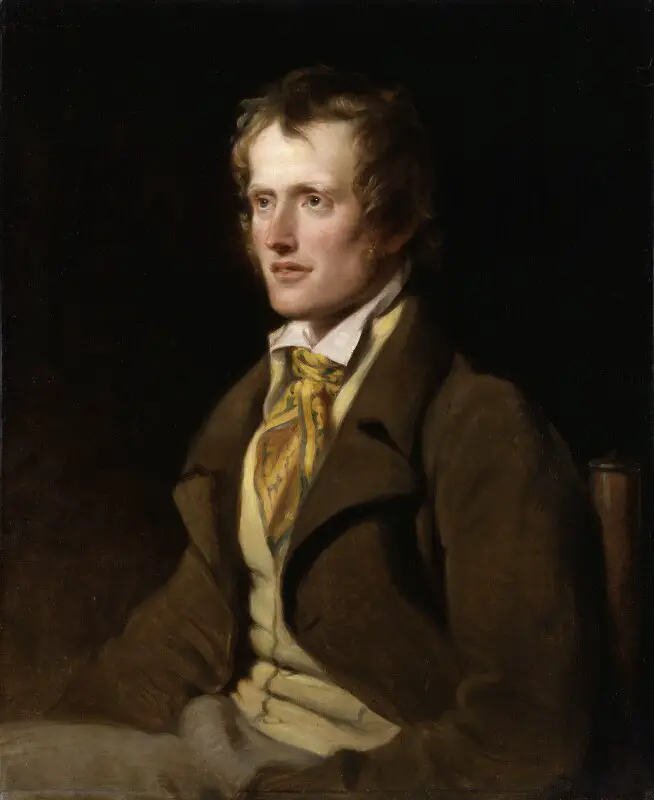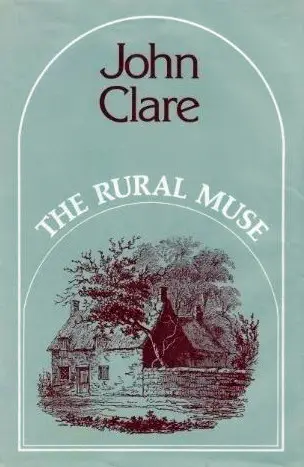Who was John Clare?

John Clare (1793-1864) was an English poet known for his representations of the English countryside and his lamentation of its disruption. His poetry underwent a significant evolution over his lifetime, reflecting his rural upbringing, his experiences with changing landscapes, and his struggles with mental illness.
Termed the ‘poet of the labouring class’, John Clare’s contribution to poetry has made him a prominent figure of 19th-century poetry. His descriptive writings were appreciated by readers and critics alike for their portrayal of nature and his own vulnerable self.
He wrote several poems and prose pieces but unfortunately, they reached the audience only after his death.
The early life of John Clare
Born in the town of Helpston, near the city of Peterborough, he has quite a difficult life. Coming from a peasant family, he had limited means and had to start working as a labourer in the fields from a young age.
He received little formal education and he attended a day school in Glintonchrurch for a few months every year till he was 12. This is where he met a student Mary Joyce and fell in love with her but later separated. He would eventually dedicate several works of his to Mary.
He was severely malnourished as a child and that became the cause of the decline of physical health in his later years. He had to do numerous odd jobs to make a living which ranged from being a gardener, working with Gypsies and as a lime burner.
Clare went on to marry one Patty Turner and have seven children. However, his financial condition did not improve. While he continued to do jobs of manual labour, he wrote his first work called ‘The Morning Walk’ inspired by James Thompson’s ‘Seasons’.
To receive an honest assessment, he would read out his poems to his parents under a different name and take their comments to improve his work.
His first set of verses was published as ‘Poems Descriptive of Rural Life and Scenery (1820)’. His powerful illumination of rural life while describing his desolation was unique in itself. The book became instantly popular and sold three thousand copies.
His ‘The Shepherd’s Calendar’ was also well received by the public. His last work, ‘The Rural Muse’ published in 1835 was favoured by various critics and reviewers but it was not enough to ease his financial burden.

Later life of John Clare
With the responsibility to support his wife and seven children, Clare was restricted to find multiple jobs to make ends meet. The pressure of it started to affect his mental health and resulted in alcoholism and erratic behaviour.
Eventually, his fears turned into hallucinations and in July 1837 decided to admit himself in Dr Matthew Allen’s private asylum in Epping Forest on the recommendation of his publisher and friend, John Taylor.
Clare lived at the asylum for about 4 years but feeling homesick, decided to escape in 1841. He ended up walking all the way to Northborough. He described this journey in the form of prose addressed to his imaginary wife ‘Mary Clare’.
He was certified insane the same year and was admitted to St. Andrew’s Asylum in Northampton where he spent 23 years.
Towards his final years, he became delusional and started to assume himself to be Lord Byron and Shakespeare from previous lives. Clare continued writing feverishly throughout his time at St. Andrews and that is when he wrote some of his best works such as ‘I Am’. He died of a stroke at the age of 71.
Complete List of Works by John Clare
(Note: This is a list of his major published collections. Clare wrote a vast number of poems, many of which were published posthumously or remained in manuscript form.)
- “Poems Descriptive of Rural Life and Scenery” (1820)
- “The Village Minstrel, and Other Poems” (1821)
- “The Shepherd’s Calendar; with Village Stories and Other Poems” (1827)
- “The Rural Muse” (1835)
- “The Later Poems of John Clare, 1837-1864” (posthumously published in various editions)
- “John Clare by Himself” (posthumously published, a collection of his writings and autobiographical pieces)
Some of John Clare’s Most Famous Poems
- “I Am“ – A poignant reflection on identity, existence, and Clare’s own struggles with mental illness.
- “Autumn“ – A vivid portrayal of the fall season, capturing its beauty and melancholy.
- “The Nightingale’s Nest“ – A detailed observation of a nightingale and its habitat, celebrating nature’s simplicity.
- “To the Snipe“ – An ode to the snipe, a bird, capturing its habits and the poet’s admiration for it.
- “The Badger“ – A narrative poem detailing the hunting and eventual death of a badger.
- “The Mouse’s Nest“ – A discovery of a mouse’s nest and a reflection on the small wonders of nature.
- “The Yellowhammer’s Nest“ – An appreciation of the intricate beauty of a bird’s nest.
- “The Fallen Elm“ – A lament for a fallen tree, symbolizing the broader destruction of the English countryside.
- “The Peasant Poet“ – A reflection on the life and death of a poet who lived a simple, rural life.
- “Winter Evening“ – A depiction of a serene winter evening in the countryside.
To John Clare – analysis
What is Life – detailed analysis
Meet me in the green glen – Summary and analysis
The dying child – summary and analysis
Love lives beyond the tomb – summary and analysis
I hid my love analysis and summary
First Love – Critical analysis
Summer images complete analysis
John Clare’s work is characterized by its detailed observations of nature, its sensitivity to the changing English landscape, and its deep emotional resonance. His poems often reflect his own personal struggles, making them both intimate and universal.
Writing Style of John Clare
Known as the ‘quintessential Romantic poet’, John Clare was a genius stuck between societal pressure and financial burdens. This made him feel alienated in his own surroundings and this desolation was poured through his writings. Although he came from a humble background with limited formal education, his writing made him stand out.
Instead of using standardised English Grammar and orthography, he compared the rules of grammar to the rules of a tyrant and refused to abide by them.